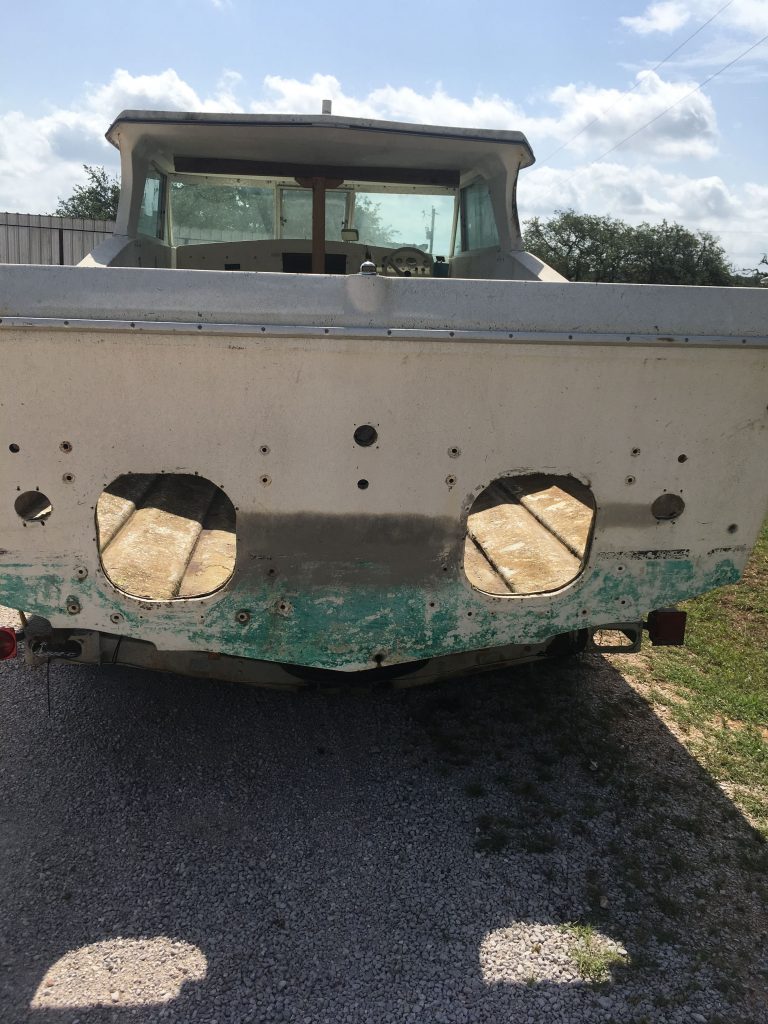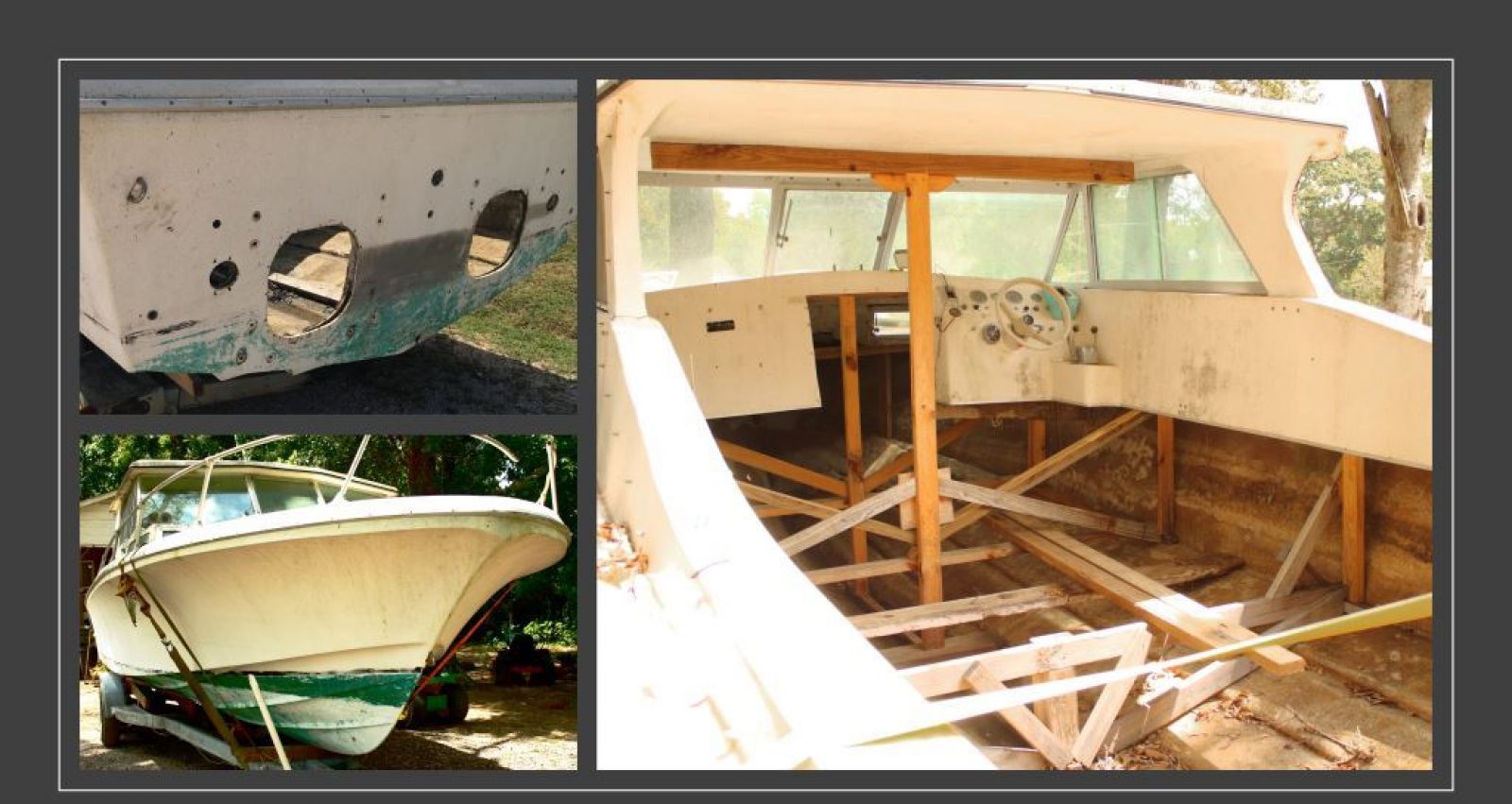
My Mom could not believe I would buy a boat with holes in it.
“Does it float?” she said.
“Nope, not with the huge holes in the back of the boat where the motors used to be,” I said.
“It doesn’t have an engine?,” she asked.
“It had two but now it just has two holes where the propellers were,” I said.
“So how does it float?”
“It doesn’t.”
At this point I realized that what I have undertaken is a crazy venture.
Just look at this boat transom picture. How would I patch the holes in the hull? What kind of transom material is best? How does the transom attach to the fiberglass? And the core question, “How to reinforce a fiberglass boat transom?” I mean it just sits there attached to the sides. Really?
The answers are IDK. Really, I don’t.
I do know that I’m looking forward to getting started.
There are four great best videos I’ve seen on boat transom repair and reinforcing a fiberglass boat transom. They inspired me to embrace the fear, buy the boat and get moving:
- Building the Transom // Project Glastron/Vlog#8 – This shows Joshua Mink gluing two pieces of plywood together, cutting them, covering them with resin, and fiberglassing them in.
- Replacing the Transom on a Boston Whaler 25 — Installing the new Plywood Core — This shows Andy with Boatworks today doing substantially more carpentry work. What a craftsman! But it is this video that gave me confidence that my double hole boat will someday float. Mom, trust me.
- Laying new fiberglass on the transom of a Boston Whaler 25 — This is the fiberglassing of the transom. What a great looking transom!
- Transom Replacement – Cutting the Fiberglass and removing the old core — Deconstructing an old transom isn’t hard. Just do it!
Check the next post for my cutting diagram.

Such an interesting story to read and follow! I have been into boating for 15 years now but I would never do something ike you. You should be a crazy man lol (jk). I own a web directory about boats. Would you mind if I add your story to my directory so more people would find out about it?